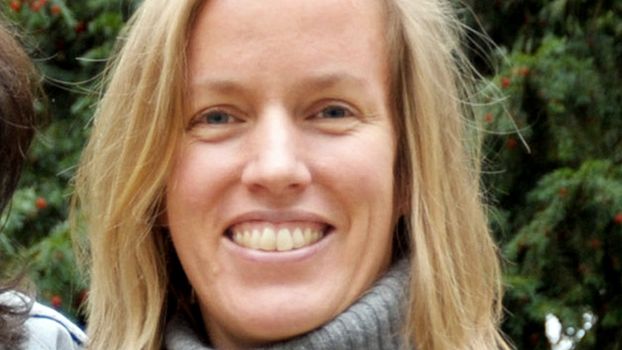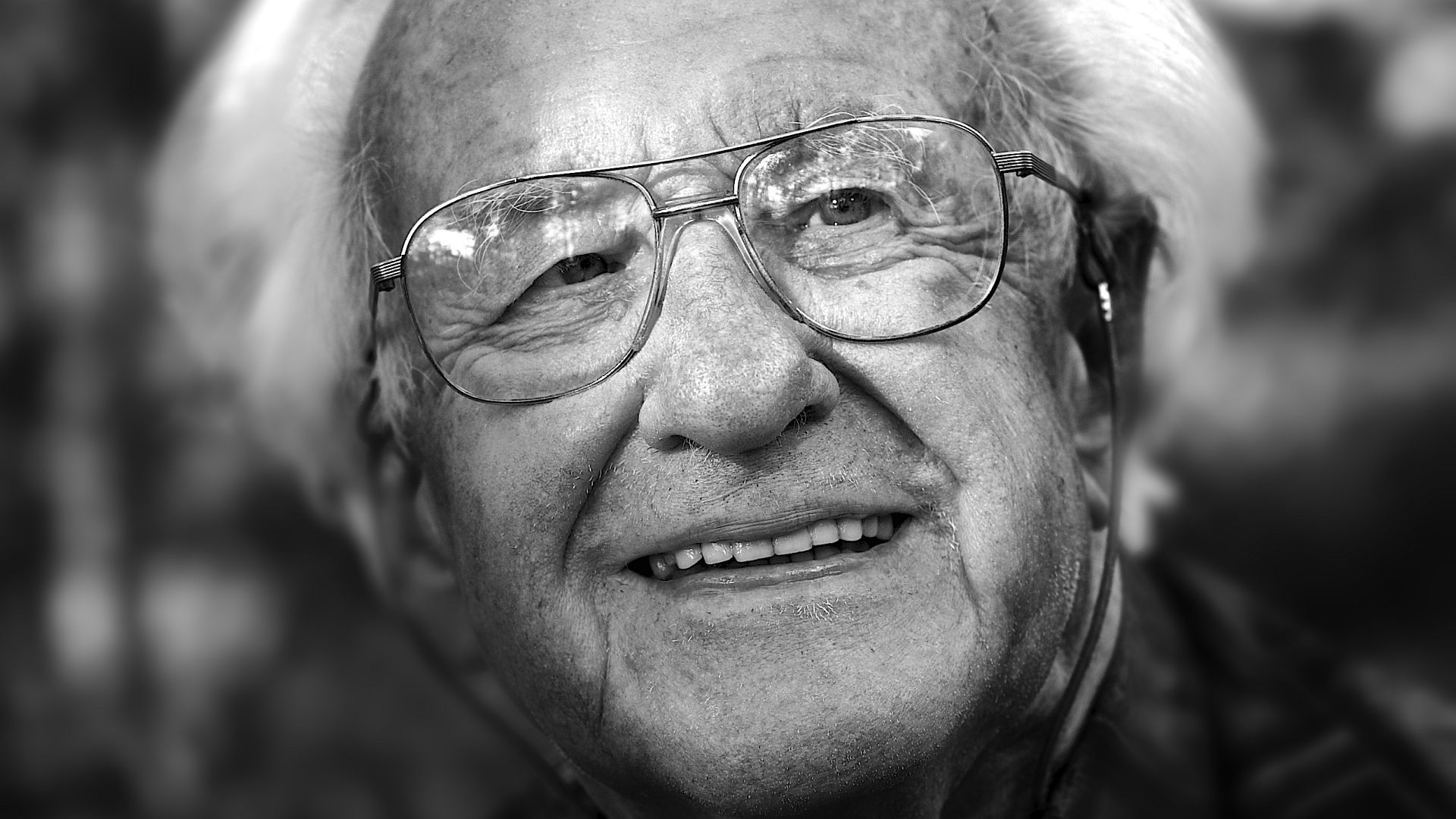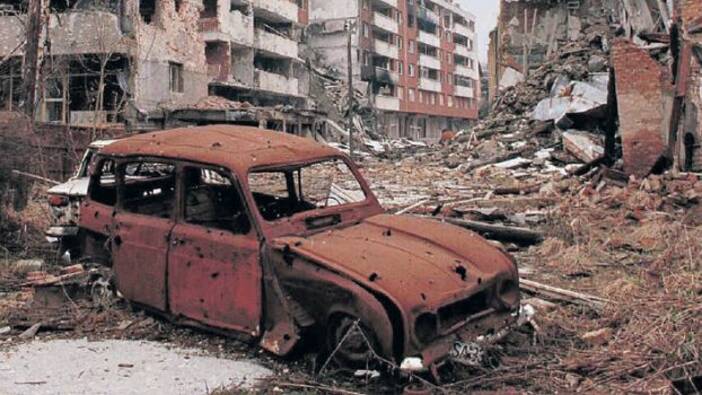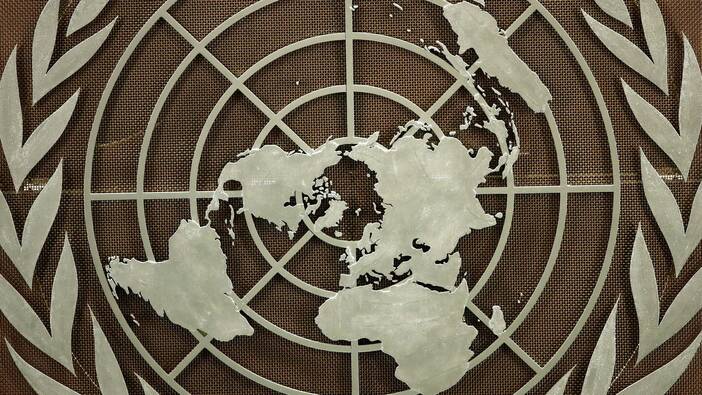
At the European Peace University in Stadtschlaining, Austria, Eva Wuchold learned to analyze conflicts and violence in all their facets. One of the teachers there was Johan Galtung.
maldekstra: If someone asked you whether peace reigns in Germany today, what would your answer be?
Eva Wuchold: We can no doubt talk of there being peace in the form of the absence of war, or the absence of organised military violence. But this would be a negative understanding of peace. We can much less talk of peace in the form of an internal social peace, and this has been so since long before the upturn of right-wing parties in Germany and Europe. Not to mention German military interventions and arms exports, the countless deaths at Europe’s external borders, or the grave consequences of climate change accelerated by the German automotive industry – all a direct result of German policies.
You speak of "negative peace" – what would "positive" peace look like?
Unlike in the case of negative peace, which is premised on the absence of direct violence, we can only talk of positive peace when it coincides with the absence of structural violence.
It is a concept that can be traced back to Johan Galtung.
Precisely – the Norwegian scholar who is regarded as the founding father of peace and conflict studies. By negative peace he understands the encroachment upon fundamental human needs, the causes of which are structural, that is grounded in values, norms, institutions or power relations, but also entirely avoidable. Or, to put it more generally: it is the discrepancy between that which is – the actual – and the potential – that which could be.
That is a very broad framework.
Yes, it includes all forms of discrimination and exploitation, the unequal distribution of income, education opportunities, life expectancy, also as a result of environmental pollution and wealth gaps of any kind, and the obstruction of any struggle for emancipation. At the foundation of Galtung’s theory are systemic factors that are independent of social actors. By contrast, positive peace in Galtung’s view is not only to be distinguished from negative peace, understood as the absence of organised collective violence, but also from the traditional understanding of peace as a synonym for stability and balance or a term for "law and order" that reflects a predictable social order. Positive peace thus operates as a synonym for “all other good things in the world community”, which, in this context, more than anything means the cooperation between and integration of groups of people rather than the absence of violence.
But does that not in the end boil down to just another way of describing the structural conditions of violence, another left-wing, materialist critique of society?
Galtung does indeed understand positive peace as a dynamic process in the sense that it is meant to bring about more just socioeconomic and political relations. And in his model of a post-revolutionary society, Galtung also tries to outline a counter-perspective in which the costs of structural violence are minimised. But in doing so, he considers aspects that go well beyond the clash between capitalism and socialism.
Can you explain this further?
What characterises Galtung’s model is the idea that society, on the one hand, seeks the personal fulfilment of its individual members, encouraging individualism and individual freedom, and, on the other, it sees the individual not just as an object of social order but also as its measure. If we assume that society is not just made by but also for individuals, then, according to Galtung, the values of a society also have meaning for the individual. Accordingly, his understanding of individualism demands the opportunity for all to exercise their freedom – even for non-conformists. His work sets out a structure which grounds solidarity in freedom and which is undergirded by the components of autonomy, participation and cooperation. He goes on to identify the deep phenomena, deep structure and deep culture which operate on all of us but which remain hidden. Galtung argues that a structure prescribes certain modes of behaviour in people, which then establish themselves because people act in a particular way without questioning why. Or do not act for similar reasons.
So we are talking about contradictions that are not always visible on the surface?
You could put it like that. Galtung is not just a sociologist and a political scientist – he is also a mathematician. He has developed all of his arguments using the analysis and scientific evaluation of these contradictions. This is how he arrived at his definition of positive peace – by calculating the sum of relative consensual values in the world community using a list of ten values, namely: 1. The presence of cooperation, 2. Freedom from fear, 3. Freedom from want, 4. Economic growth and development, 5. Absence of exploitation, 6. Equality, 7. Justice, 8. Freedom of action, 9. Pluralism, 10. Dynamism. These are highly complex analyses, not simply a subjective position.
How did you come across Galtung’s work?
I have experienced first-hand what violence means during periods spent abroad, such as in Ambon in Indonesia, where in 1996 there was civil unrest between the Madurese and the Dayaks, in Palestine during the Intifada of 2000, or in Mexico in 1998 and in Brazil in 2002. At the same time, I also observed for myself how scarcely German foreign, cultural and developmental policy wants or is able to respond to it. That is why I chose to pursue a degree in peace studies at the European Peace University in Stadtschlaining once I had finished studying in Germany. There we learned how to analyse conflicts and violence in all their facets – always using concrete case studies. More than anything, though, we learned what is needed to maintain peace and what this even means. Johan Galtung was one of the teachers there.
How did you find him as a person?
I saw Galtung first and foremost as a free spirit. His credo with respect to all conflicts that he helped us analyse was "to think out of the box", so to think creatively beyond one-size-fits-all solutions. For me, after everything I had learned during my studies in Germany, this was nothing less than revolutionary: Galtung’s approach to conflict resolution did not involve compromises, which often result in both sides of the conflict having the feeling that they have given up too much. His theory was that a breakthrough can only happen once all parties in a conflict force themselves to overcome their old ways of thinking, which results in everyone being satisfied in the end.
Eva Wuchold, born in 1973, is a political scientist whose work focuses on peace and conflict studies as well as environmental politics. She has worked as a project consultant for several NGOs in the fields of civil peace service and development cooperation. Today she heads the Department of Global Issues and Special Funds at the Rosa-Luxemburg-Stiftung where she advises on a number of issues, including positive peace. Here she is in conversation with Tom Strohschneider, co-editor of maldekstra.
Johan Galtung, sociologists, political scientists and mathematicians like to think "out of the box". Photo: Paul Bernhar, via transcend.org
Are Galtung’s methods successful?
There have been some successes, for example, in the case of the resolution of some border conflicts through the formation of joint-run national parks. But what has impressed me most is that in spite of the countless failed attempts at mediation, whether in Sri Lanka or Iraq, he continues to promote complete nonviolence rooted in the key skills of empathy, creativity and nonviolence, which he describes in his book ‘Peace by Peaceful Means’. And also that he does not shy away from bold assertions, such as his prediction about the downfall of the US empire by 2020, which he made during a debate with Samuel P. Huntington at Neuhardenberg Palace, regardless of how people react to them. Despite being such a big name, Johan stayed in the same hostel as us, cooked, ate and sat in the sauna with us – as if he wouldn’t have had it any other way. He wanted to win us over for his cause. And he did so consistently, also by acknowledging us as equals to him in the discussions we had.
Galtung formulated his concept of ‘structural violence’ when the reception of structuralist thought was in its heyday. Louis Althusser, for example, undertook a structuralist reinterpretation of Marxist theory. Did that play a role?
I don’t know if Galtung engaged with Althusser’s work. In my view, what is important in this context is that in his 1971 article ‘A Structural Theory of Imperialism’, which is of vital importance to this discussion, Galtung does not conceive of structural violence as simply another formulation for capturing the structural conditions of violence. Rather, he equated structures themselves with violence, in so far as they represent inequality and prevent people from exhausting their actual or presumed potential for development. Inequality is therefore not only a phenomenon of structural violence but is, at the same time, its very condition.
If each instance of a discrepancy between the actual and the potential can be decried as violence, that leaves very little room for conditions of nonviolence.
I am familiar with the critique of Galtung’s interpretation of inequality as a relation of violence, and also with the criticism that his definition of structural violence is broad and vague. What is important for me, however, as much now as it was then, is that we have Galtung to thank for the fact that the concept of violence has been expanded to include phenomena such as poverty, hunger, subordination and social exclusion, and that the options for peace have also increased as a result. Equally, I find the category of cultural violence in his triangular model of violence helpful in the analysis of conflicts. For if structural violence is institutionalised and cultural violence internalised, then the risk of personal, direct violence establishing itself also increases. Overall, I have always understood Galtung’s work much more as peace rather than conflict studies.
How do you see his idea relating to the wider debate around peace politics?
Johan Galtung is controversial, particularly in Germany and even in academic circles as well, because he is often suspected of pursuing political rather than scholarly goals. His ideas are also criticised for failing to explain war as such. And whilst it is true that the idea of structural violence does encompass violent conflicts, positive peace does presuppose negative freedom. I think that the criticism goes hand in hand with a crisis in critical peace studies in general, which construes scholars who are critical of the system, and thereby also theories of structural violence, as an attack against the peacekeeping power of the state.
The Rosa-Luxemburg-Stiftung has set up a dialogue programme under the heading ‘Positive peace’. Why?
We chose the concept because it aims to establish lasting peace that does not only put an end to direct violence. We pose questions, such as what forms of structural violence do we see? How and at what point do these transform into direct violence? What forms of resistance and social and political movements against direct and indirect violence are there? What are left-wing political answers to direct and structural violence? What might a left-wing ‘politics of positive peace’ look like?
And what might it look like?
Not waiting until the horse has bolted to start thinking about peace; the causes of conflict need to be taken into account. Furthermore, conflicts exist long before they erupt into open violence. This is where a politics of positive peace can be used pre-emptively: in cases of political discrimination or human rights violations, unfair socioeconomic distribution, the relations of cooperation and competition between states and blocs in the context of sales markets and global resources in the world’s capitalist economy, environmental protection or states’ pursuit of their own geopolitical interests, which can very quickly upscale local conflicts to proxy wars. Something has to change here if peace is to be more than merely the temporary absence of war.
In light of this, what is your view of German development policy?
Development policy in its current form is not concerned with fostering structures that would enable the people of those regions to establish and participate in what Galtung describes as peace. This is clear, for example, in the programmes driving the large-scale industrialisation of agriculture in developing countries. This exacerbates the injustices in rural areas tremendously. Such projects, based on purely economic logic and co-financed with private capital, where little more than green innovation centres are cultivated on the land, are simply unable to establish positive peace. Quite the opposite: they will encourage new sources of structural violence to emerge.
Translation and Proofreading: Dr. Carly McLaughlin and Nivene Rafaat for lingua•trans•fair
Published in German:
Frieden ist mehr als Abwesenheit von Krieg
maldekstra #2 über die strukturellen Ursachen gewaltvoller Konflikte


